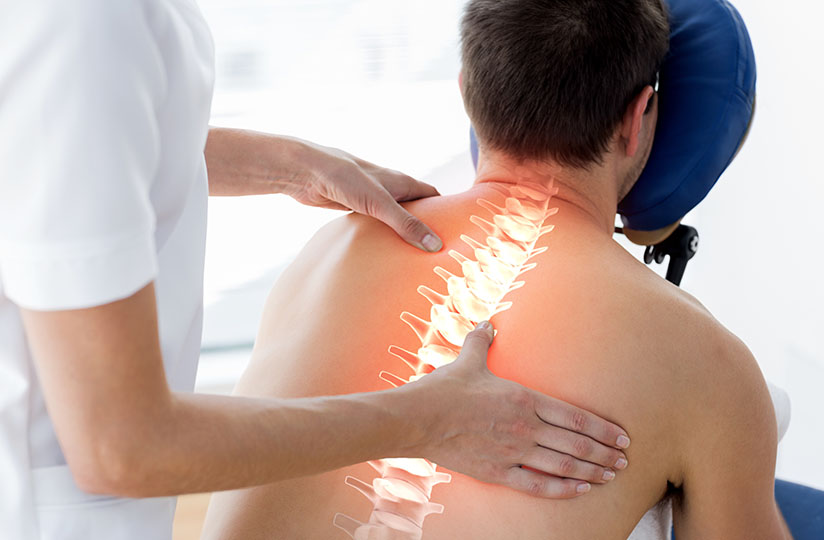Spinal Manipulations And How It Can Reduce Lower-Back Pain
Lower-back pain is a common condition amongst the population and it generally improves using self-care practices that people can engage in, such as applying heat, remaining active, or taking medication designed to

relieve pain. In some cases, however, low-back pain can be difficult to treat, with professionals being trained to use spinal manipulation, which is a technique designed to relieve lower-back pain and to improve physical function.
Back pain affects 9 out 10 people at one point during their lifetime, making it one of the most common health complaints. For plenty of people, the pain goes away on its own after a period of time, but in some cases, it can become chronic and last for months or even years. The pain can be debilitating, and lower-back pain can be difficult to diagnose, study, and treat. Tallying up the annual costs in the United States of lower-back pain, the amount gets to more than $100 billion. Spinal manipulation, called “spinal manipulative therapy” in some cases, is practiced by chiropractors, naturopathic physicians, physical therapists, and other healthcare professionals and medical doctors. Spinal manipulation is performed by the practitioner using either their hands or a device in order to apply a controlled amount of force to the joints along the spine. The amount of force that gets applied depends on the type of manipulation that is being used, but the ultimate goal is to relieve pain and to improve physical functioning.
If the technique sounds appealing, you can search for the best chiropractor near you in order to find out more. You can search for chiropractic in Westchester and go through with the procedure if you’re seeking to reduce the lower-back pain. A quick search for “chiropractor Westchester” will offer you all the contact information you need.
Studies showed that spinal manipulation is one of a number of options that can provide relief that is mild-to-moderate from lower-back pain. The technique also seems to work just as well as conventional treatment techniques, like applying heat, taking medication, or using a firm mattress.
Spinal manipulation was included in 2007 by the American Pain Society and the American College of Physicians as a treatment option for practitioners to take into consideration if lower-back pain does not end up improving with self-care.
In 2010, a report from the Agency for Healthcare Research and Quality pointed out that spinal manipulation, among other complementary health therapies, provide additional options when it comes to conventional treatments, which in some cases have limited benefit when it comes to managing neck and back pain. The report from the Agency for Healthcare Research and Quality also noted that spinal manipulation is as effective as medication when it comes to reducing the intensity of lower-back pain, and it was more effective than placebo. On the other hand, however, it was noted by researchers that the results were inconsistent when spinal manipulation was compared to physical therapy or massage as far as reducing the intensity of lower-back pain went.
A review conducted in 2011 of 26 clinical trials, investigating the effectiveness of various treatments for chronic lower-back pain, end up with the author concluding that spinal manipulation is just as effective as other interventions.
When it comes to risks or side effects, reviews pointed out that spinal manipulation is relatively safe when it is performed by a licensed and trained practitioner. Side effects are usually minor, and can include temporary soreness or feeling tired. People who are in pain as a result of a herniated disc appear do not benefit from spinal manipulation, as there is a chance, albeit low, of the technique worsening the herniation.
A rare complication brought forth by spinal manipulation, according to reports, is CES (cauda equina syndrome). CES is a significant narrowing of the spinal canal’s lower part, where the nerves become pinched and could end up causing pain, loss of feeling in one or both legs, weakness, and bladder or bowel problem. At the same time though, it is unclear if there is an actual link between CES and spinal manipulation, given that cauda equina syndrome generally occurs without spinal manipulation.
When it comes to managing lower-back pain, as a result of review of clinical guidelines based on evidence, showed that there are several recommendations for primary care physicians, and also pointed out the potential benefits that non-drug therapies (such as spinal manipulation, physical therapy, massage, and exercise) can have.
Routine imaging is usually not necessary for those when it comes to acute low-back pain for patients who have suffered from a nonspecific form for a short amount of time. The condition of those patients often times improves on its own, and should generally remain active, and educate themselves about back pain and what self-care options they have. They should consider employing non-drug therapies in case the pain lasts for a longer amount of time than four weeks.
When it comes to chronic back pain, usually, long-term use of opioid drugs does not improve the condition for patients. Those patients could benefit however from non-drug therapies. In addition, most patients who suffer from chronic back pain will not end up completely pain-free, but the goal is to improve function and to reduce the amount of pain.
If you suffer from a form of lower-back pain and you’re interested in spinal manipulation, you can search for the best chiropractor near you. A simple search online (for example if you live in Westchester: “chiropractic in Westchester” or “chiropractor Westchester”) should yield the results you need.